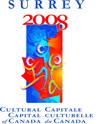The first software toolkit facilitates creation of the motion sequence grids that we have been posting here and in our Flickr and Facebook groups. Built in Processing, the Motion Sequence Toolkit creates grids from either live webcam input, or from pre-recorded video. In both cases, the application offers a different perspective on motion by separating it into still frames. Here is screenshot of the interface, in standard grid mode:
Here, we are seeing a motion history of the last 6 seconds of motion, displayed on screen as a grid (I'm holding a drinking glass in front of the webcam). You'll notice along the top of the screen that there are some controls (in blue). Using this control bar, we can change frame rate, frame size, and frame arrangement. We can make the frames very large:
Or, very small:

We can achieve a slit-scan effect by reducing the rows to 1:

Or by reducing the columns to 1:

This toolkit gives us a variety of ways to look at motion from new perspectives. Of particular interest is the ability to take pre-recorded video and render it in different forms.
The Motion Sequence Toolkit will be available for public download shortly. In the meantime, if you are an artist or an educator who would like to get ahold of a beta version, please contact our project coordinator and we'll help you out as best as we can.

We can achieve a slit-scan effect by reducing the rows to 1:

Or by reducing the columns to 1:

This toolkit gives us a variety of ways to look at motion from new perspectives. Of particular interest is the ability to take pre-recorded video and render it in different forms.
The Motion Sequence Toolkit will be available for public download shortly. In the meantime, if you are an artist or an educator who would like to get ahold of a beta version, please contact our project coordinator and we'll help you out as best as we can.








